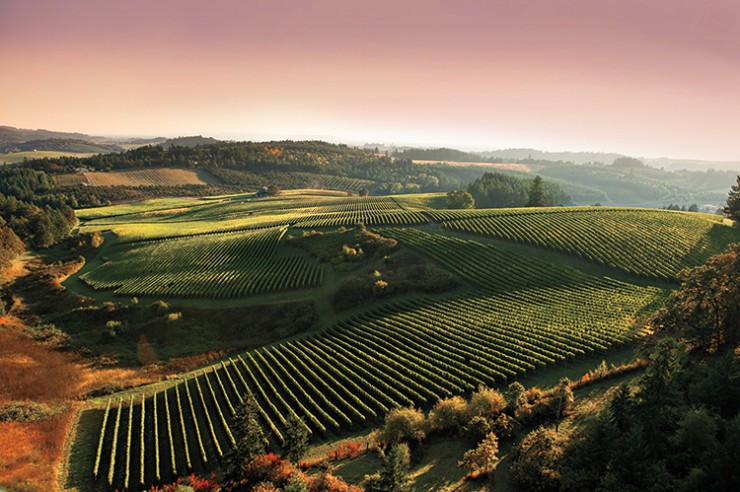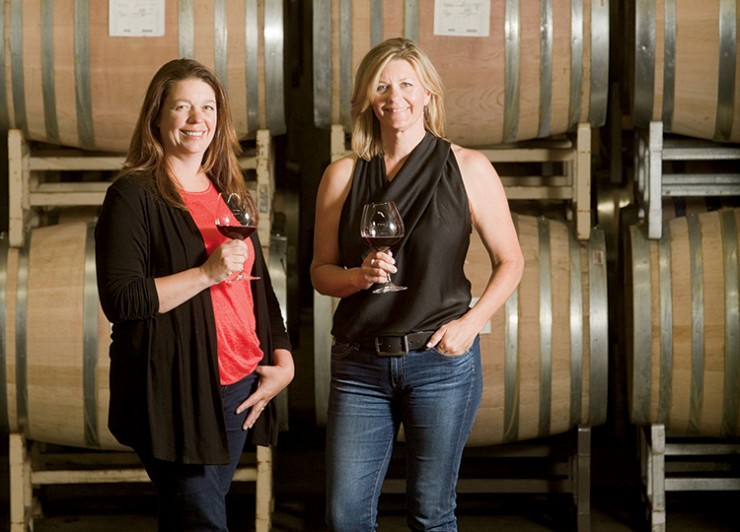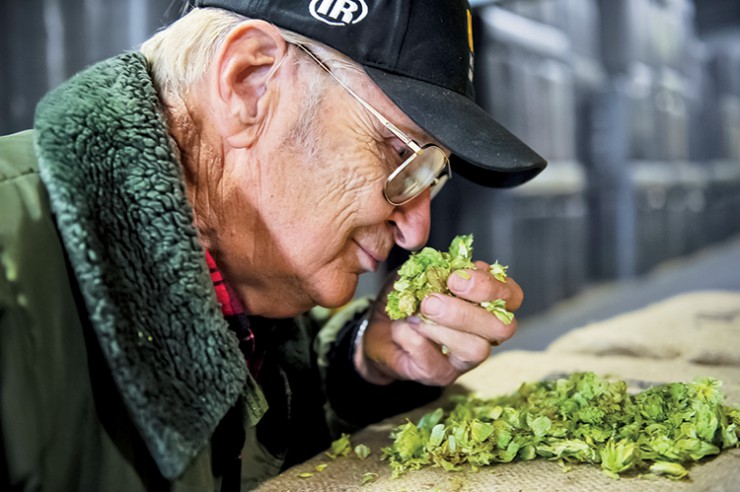Home > Oregon > Oregon Farm to Table > Vintage Oregon
Vintage Oregon

Oregon winemakers know the key to producing some of the country’s most flavorful wine is to let Mother Nature do most of the work. Oregon is home to nearly 500 wineries, and what makes each distinct is the origin of the grapes used to make its product.
“A key Oregon principle is to match the grape variety to the place where it will grow best, not just where it is able to grow,” says Michelle Kaufmann of the Oregon Wine Board. “That’s why Willamette Valley pinot noir is so wonderful; a cooler climate is best for that grape. And why tempranillo from the Umpqua Valley is so full of character; that variety prefers warmer temperatures.”
Maria Ponzi, president and director of sales and marketing for Ponzi Vineyards of the Willamette Valley, adds that variation in soil types also contributes to the flavors of Oregon wine.

“The Red Hills soil in Dundee tends to produce more red-fruited characteristics like cherry and strawberry, while the Laurelwood soil we find here in the Chehalem Mountains tends to produce more blue and black-fruited characteristics like that of blueberries, plum and blackberry. These are vines that are now deeply rooted in the basalt base of our soils,” Ponzi says.
“More than 400 Oregon wines were reviewed at 90 points or higher by the Wine Advocate in 2013. This makes up 22 different varieties of wine from 13 different regions across Oregon. And, we’re just getting started,” Kaufmann says.
The impact of the wine industry on the state’s economy doubled between 2005 and 2010 to more than $2.7 billion and accounted for more than 13,000 wine-related jobs and $382 million in wages, Kaufmann says.
Ponzi says part of the industry’s growth has been the result of expanding markets overseas.
“There is a real interest in Oregon wines everywhere, but I found this particularly true in Scandinavia,” Ponzi says. “I think this is due to the higher acid and lower alcohol wines that lend themselves so well to the indigenous dishes of that area. London and Japan have been supporters of Oregon wine for many years now.”
A Craft Brewery Leader
Oregon is a national leader in the craft brewery movement, which has grown from about two dozen breweries nationally in the 1980s to more than 3,000 today. In Oregon, the industry is comprised of 214 breweries, accounts for close to a $2.83 billion economic impact and employs more than 29,000 workers. Portland has more breweries than any city in the world.
A large part of this growth can be attributed to the state’s pub culture and openness to new ventures, says Irene Firmat, founder and CEO of Full Sail Brewing Company in Hood River.
But the success of the movement in Oregon is also the result of the relationship between brewers and hop growers. Nearly 15 percent of U.S. hops are grown in Oregon – a significant advantage for companies when crafting their signature brews.
“We have the kind of climate that the hops like – the kind of aromatic and flavorful hops that the craft brewers use,” says Nancy Sites, administrator of the Oregon Hop Commission. “Over the last few years, hop growers have raised more varieties. In the past, brewers used only two or three certain varieties. Now farmers offer more than 30. That gives each brewer a lot of flavor choices so that they can produce different taste profiles.”
Firmat says ties to Oregon’s agricultural community will help strengthen the state’s brand and inspire even more growth. She says, “The connection Oregon breweries have to the farmers who grow the hops sets us apart from the rest.”





